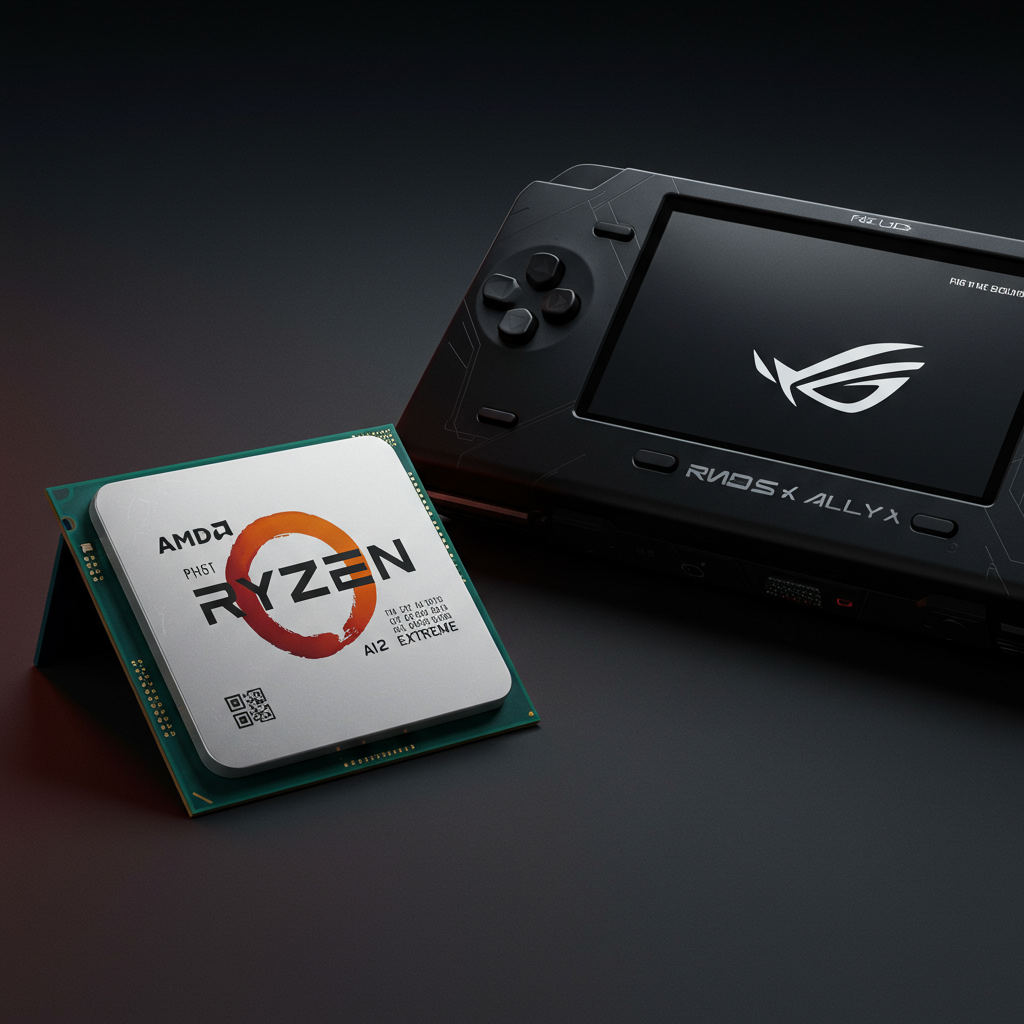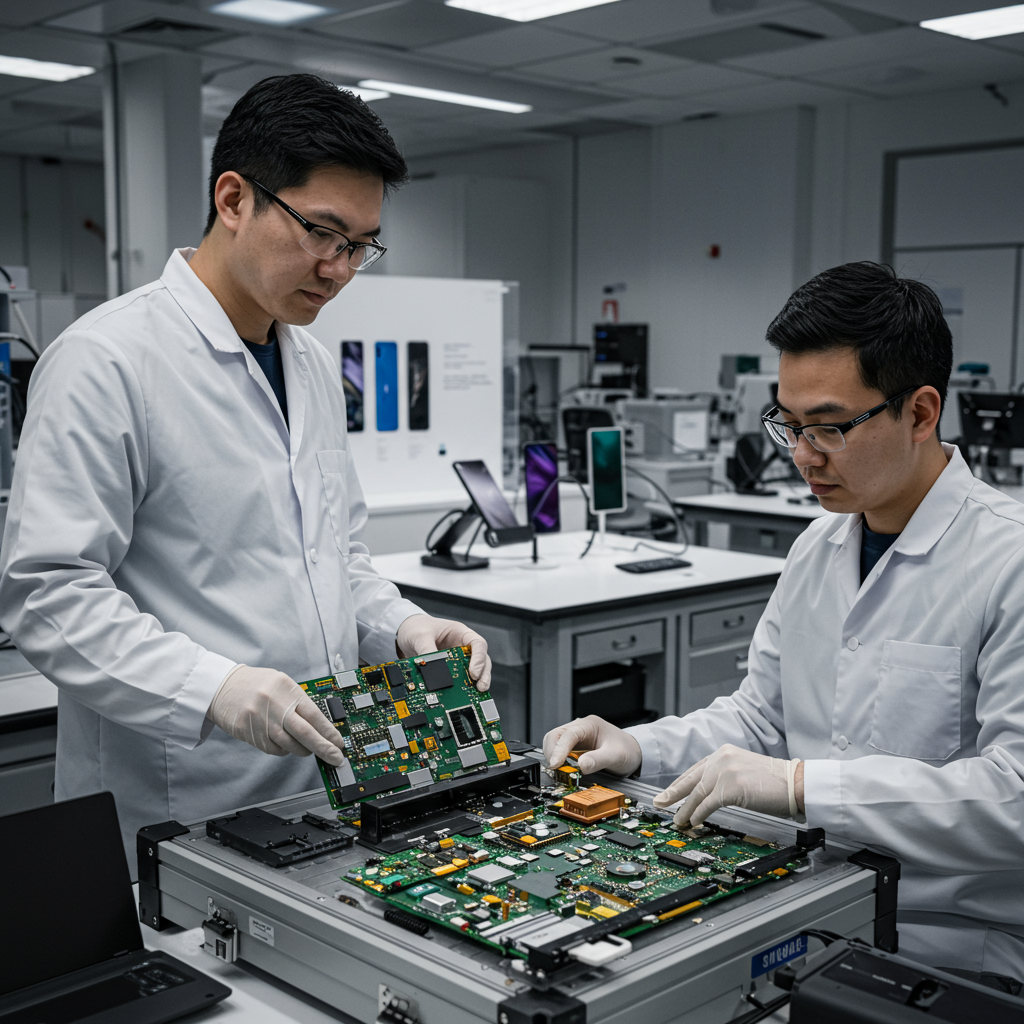The highly anticipated AMD Ryzen AI Z2 Extreme, touted as the next-generation processing powerhouse for portable gaming, is finally getting its moment in the spotlight. Early benchmarks for devices like the ASUS ROG Xbox Ally X have begun to surface, painting a complex picture that balances impressive synthetic scores with more modest real-world gaming gains. This deep dive explores the Z2 Extreme’s capabilities, compares it to its predecessor and emerging rivals, and offers crucial insights for anyone considering an upgrade in the rapidly evolving handheld PC market.
AMD’s Next-Gen APU: Unpacking the Ryzen AI Z2 Extreme
AMD’s Ryzen AI Z2 Extreme APU arrives with considerable hype, positioned as a successor to the widely successful Z1 Extreme found in popular handhelds like the original ASUS ROG Ally. Revealed at IFA 2024 and officially unveiled at CES 2025, this chip promises significant advancements in both performance and efficiency. Unlike previous iterations, the “AI” designation highlights a key feature: an integrated XDNA2 Neural Processing Unit (NPU), transforming devices into “AI PCs” by offloading AI-related tasks from the CPU and GPU. This integration is designed to boost overall system efficiency, particularly benefiting future applications and specific gaming workloads.
The Ryzen AI Z2 Extreme features a powerful configuration of 8 Zen 5 CPU cores and 16 RDNA 3.5 integrated GPU cores, operating within a flexible 15W to 35W Thermal Design Power (TDP) range. This represents an architectural leap from its predecessor, the Ryzen Z1 Extreme, which utilized 8 Zen 4 CPU cores and 12 RDNA 3 GPU cores within a similar TDP envelope. The shift to Zen 5 and RDNA 3.5 is expected to yield better instruction per clock (IPC) and graphical rendering capabilities, respectively.
Early Benchmarks: A Mixed Reality Check
Initial performance comparisons, notably from channels like ETA PRIME, offer a crucial perspective. While synthetic benchmarks often show the Ryzen AI Z2 Extreme pulling ahead, real-world gaming performance in early tests suggests a more measured improvement over the Z1 Extreme. It’s vital to remember that these are preliminary results, with driver optimization still in its nascent stages—a factor that historically leads to substantial performance boosts post-launch for new hardware.
In Geekbench CPU tests, the Z2 Extreme demonstrated superior single-core performance at 17W TDP (2,325 vs. 1,795 for Z1 Extreme), though it slightly trailed in multi-core scores. At 25W TDP, it led in both categories. The integrated RDNA 3.5 GPU also showed a significant lead in OpenCL Geekbench (33,488 vs. 27,807) and consistently outperformed in 3DMark synthetic graphics tests.
However, the real-world gaming picture is more nuanced:
Cyberpunk 2077 (Steam Deck preset, 25W TDP): The Z2 Extreme averaged 46.65 FPS, a modest 4 FPS higher than the Z1 Extreme’s 42.66 FPS.
Shadow of the Tomb Raider: 64 FPS for Z2 Extreme versus 59 FPS for Z1 Extreme.
Forza Horizon 5: 80 FPS for Z2 Extreme compared to 76 FPS for Z1 Extreme.
Black Myth: Wukong: 49 FPS for Z2 Extreme against 44 FPS for Z1 Extreme.
Horizon Zero Dawn Remastered: A slim lead with 31 FPS for Z2 Extreme versus 30 FPS for Z1 Extreme.
These figures indicate that while the Z2 Extreme is undeniably more powerful, the performance uplift in many current games might not be as “dramatic” as initially hyped, leading some experts to advise against upgrading from a Z1 Extreme device “just yet.”
The ASUS ROG Xbox Ally X: Crafting an Ideal Handheld
The ASUS ROG Xbox Ally X, developed in a close partnership between ASUS and Microsoft, aims to redefine the Windows gaming handheld experience. This premium device is set to feature the top-tier Ryzen AI Z2 Extreme APU, paired with 24GB of LPDDR5x RAM (running at 7,500MT/s, potentially higher in some configurations), a spacious 1TB SSD, and a substantial 80Wh battery. It sports a vibrant 7.0-inch 1080p IPS display with a fluid 120Hz refresh rate, complemented by Variable Refresh Rate (VRR) and FreeSync for tear-free gaming.
Beyond raw power, the Xbox Ally X focuses heavily on user experience. It runs a “super-slim” version of Windows 11 underneath a newly enhanced Xbox app, designed for gamepad navigation and acting as an all-in-one launcher for games from Steam, Epic, and GOG. Initial hands-on reports praise its “optimal gameplay experience,” with titles like Gears of War: Reloaded running smoothly at 60 FPS in Turbo mode. Ergonomically, the device is described as exceptionally comfortable, feeling like an Xbox controller fused with a screen, albeit resulting in a bulkier form factor than some competitors. A standard Xbox Ally model, featuring the less powerful Ryzen Z2 A chip, 16GB RAM, 512GB SSD, and a 60Wh battery, is also expected, offering a potentially more affordable entry point.
Comparing Against Competitors: Intel and Beyond
The Ryzen AI Z2 Extreme doesn’t just face internal competition from its Z1 predecessor; it also goes head-to-head with rivals like Intel’s Lunar Lake chips. In early benchmarks for MSI’s Claw A8 (Z2 Extreme) against the Intel Lunar Lake-based Claw 8 AI+, the AMD chip generally edged out Intel, particularly at 17W TDP. However, the performance gaps were often narrow, sometimes less than a single frame per second in games like Far Cry 6. Even with the Z2 Extreme boasting double the GPU core count and higher thread counts (16 vs. Intel’s 8), the real-world differences at times were not drastic enough to declare a definitive winner across the board, with the Intel chip even surpassing AMD in Resident Evil Village at 30W TDP. This suggests a highly competitive landscape where raw specifications don’t always translate to overwhelming real-world advantages.
Adding to the complexity are rumors of upcoming AMD Strix Halo-powered devices, such as the GPD WIN 5, featuring the formidable AMD Ryzen AI Max+ 395 APU. With an astonishing 40 GPU cores, 16 CPU cores, and 32 threads – dwarfing the Ryzen AI Z2 Extreme‘s 16 GPU cores and 8 Zen 5 cores – the Strix Halo is anticipated to be in a “different league.” Early teasers show games like Blackmyth: Wukong hitting over 200 FPS, suggesting “absurd performance.” While potentially “overkill” for a handheld and likely carrying a premium price tag, these chips could quickly overshadow the Z2 Extreme in sheer power, potentially polarizing the market between budget-friendly options and ultra-high-performance devices.
The Outlook: Performance, Price, and Purchase Decisions
The Ryzen AI Z2 Extreme offers a clear evolutionary step for AMD’s handheld APU line, bringing Zen 5 and RDNA 3.5 architectures alongside a dedicated NPU for AI capabilities. While synthetic benchmarks show impressive gains, real-world gaming performance currently offers modest improvements over the Z1 Extreme. The early stage of driver support, however, is a critical factor, with significant optimizations expected in the coming months.
For consumers, the arrival of the ROG Xbox Ally X with the Ryzen AI Z2 Extreme represents a compelling, polished package with a strong focus on user experience and Xbox integration. Its substantial battery and ergonomic design are strong selling points. However, the projected high price point could be a significant barrier, especially when considering the emerging threat from immensely powerful Strix Halo devices. The base Xbox Ally, featuring the Ryzen Z2 A chip, is expected to offer scaled-down performance, potentially comparable to the Steam Deck, making it a more budget-friendly but less powerful option.
The overall advice remains cautious: if you own a Z1 Extreme device, a direct upgrade to a Z2 Extreme handheld might not yield a revolutionary gaming experience yet*. Waiting for more mature drivers and further market developments, or saving up for the truly next-gen Strix Halo chips, could be a more prudent strategy for performance enthusiasts. For those entering the market, the Ryzen AI Z2 Extreme offers a strong, future-proofed foundation for a premium Windows handheld, provided the price aligns with expectations.
Frequently Asked Questions
What are the key performance differences between the Ryzen AI Z2 Extreme and the Z1 Extreme in gaming handhelds?
The Ryzen AI Z2 Extreme features newer Zen 5 CPU and RDNA 3.5 GPU architectures, alongside a dedicated XDNA2 NPU for AI tasks, compared to the Z1 Extreme’s Zen 4 and RDNA 3. While synthetic benchmarks show significant leads for the Z2 Extreme, particularly in GPU performance, early real-world gaming tests reveal more modest gains. For instance, in Cyberpunk 2077, the Z2 Extreme averaged only about 4 FPS higher than the Z1 Extreme. Experts attribute this to early driver support, suggesting performance will improve, but currently, the difference may not justify an immediate upgrade for existing Z1 Extreme users.
Which upcoming handhelds will feature the Ryzen AI Z2 Extreme, and how do they differentiate?
The top-tier ASUS ROG Xbox Ally X is confirmed to feature the Ryzen AI Z2 Extreme, offering premium specifications like 24GB RAM, a 1TB SSD, and an 80Wh battery, alongside a refined Windows/Xbox user experience. Other devices, like the MSI Claw A8, are powered by the Ryzen Z2 Extreme (without the “AI” NPU prefix), focusing on raw gaming power. ASUS also plans a base Xbox Ally with the less powerful Ryzen Z2 A chip (comparable to Steam Deck’s SoC), aiming for a more affordable price point. The inclusion of the “AI” NPU in the Xbox Ally X highlights its capability as an “AI PC,” offering efficiency benefits beyond just gaming.
Should I consider upgrading to a Ryzen AI Z2 Extreme handheld, or are there better alternatives on the horizon?
Based on current data, if you already own a Ryzen Z1 Extreme device, a direct upgrade to the Ryzen AI Z2 Extreme might offer only modest real-world gaming improvements. Experts recommend waiting for more mature driver support to unlock its full potential. However, if you’re looking for a new premium handheld, the Ryzen AI Z2 Extreme in devices like the ROG Xbox Ally X offers cutting-edge technology, strong ergonomics, and a streamlined user experience. Be aware that even more powerful alternatives like AMD Strix Halo-powered devices (e.g., GPD WIN 5 with Ryzen AI Max+ 395) are on the horizon, promising significantly higher performance, though likely at a much higher price. For value, existing Z1 Extreme devices or the more affordable Z2 A models might be a better choice for some users.



